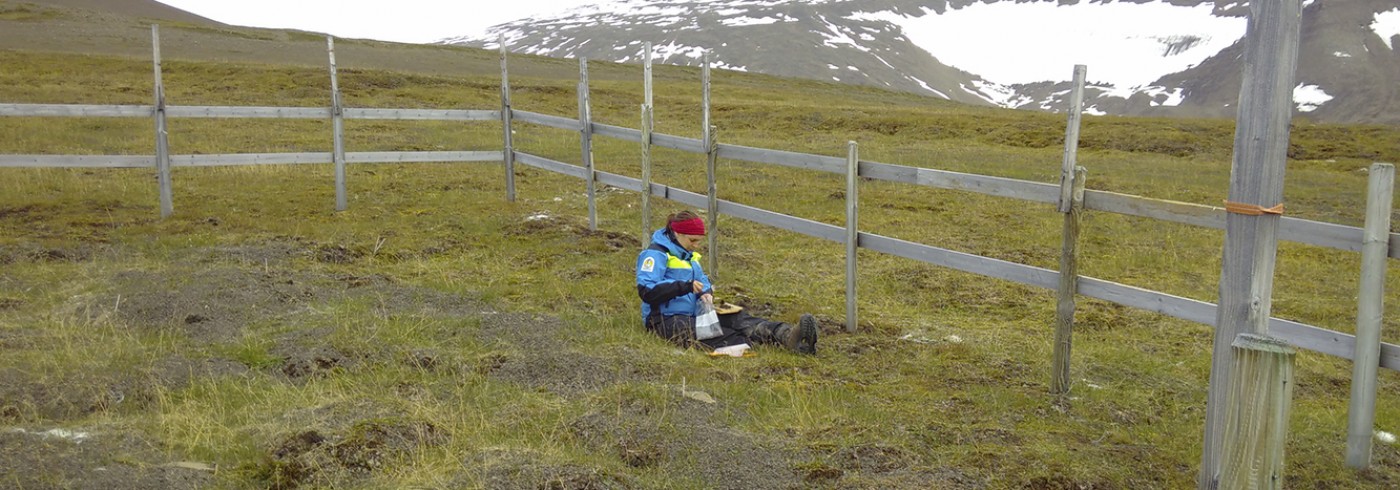What would the Arctic tundra look like without grazing?
8 July 2018 - 12 August 2018
After a day of field inventories, the field team passes by one of the exclosures in Kangerlussuaq, Greenland on their way back to base camp. Photo: Elin Lindén
In the Arctic, almost all ice-free land is grazed by wild or domesticated reindeer. Reindeer grazing affect the Arctic landscape by controlling what type of plants and what plant species that is there. For example they can hold back spread of trees and tall shrubs and in general graze down tall vegetation. They also affect nutrient cycling, ecosystem processes and how the vegetation and ecosystem respond to climate change. To better understand how future vegetation patterns and biodiversity might look like in the Arctic, it is therefore important to study the interaction between plants and herbivores.
In my project we visit a number of exclosures across the Arctic, built 15-40 years ago to keep reindeer out. By comparing the vegetation and soil nutrients inside and outside the exclosures, we can see how grazing affect the outer vegetation and plant available nutrients. Since we visit exclosures in several Arctic sites, we will be able to say something about what long-term reindeer grazing does to tundra vegetation and nutrient cycling in the Arctic at a large scale.

Two exclosures put up in a dry heath habitat at Toolik Lake, Alaska. Here, it seems like the exclusion of reindeer have led to an increase in lichen biomass. Photo: Elin Lindén
In 2018 we inventoried exclosures in Ny-Ålesund, Svalbard as well as sites in Kangerlussuaq, Greenland and Toolik Lake, Alaska. During the inventory we measured plant species composition, greenness of the vegetation and leaf area index (LAI) which translates to the productivity of the ecosystem. We also measured how much light the vegetation reflects which can affect the nutrient cycle, energy balance and greenhouse gas fluxes, and we sampled soils for analyses of nitrogen and phosphorus.
This years’ successful field sampling will add to the data from 2017 when we inventoried exclosures in Semmeldalen, Svalbard. Collectively our collected data will contribute to understanding how grazing animals affect the response of Arctic vegetation to climate change. During the summer of 2019, we will add another two sites, Zackenberg, Greenland and Daring Lake, Canada, to add more climatic conditions, types of vegetation and grazing intensities and thereby get a better representation of the diverse Arctic landscape.

Plot inside exclosure and grazing Svalbard reindeer outside exclosure near Ny-Ålesund, Svalbard. Photo: Elin Lindén

Maja Sundqvist measure albedo (how much of incoming light that is reflected) in control plots and Tobias Grassauer keeps protocol, near Ny-Ålesund, Svalbard. Photo: Elin Lindén
Elin Lindén
Department of Ecology and Environmental Sciences, Umeå University

